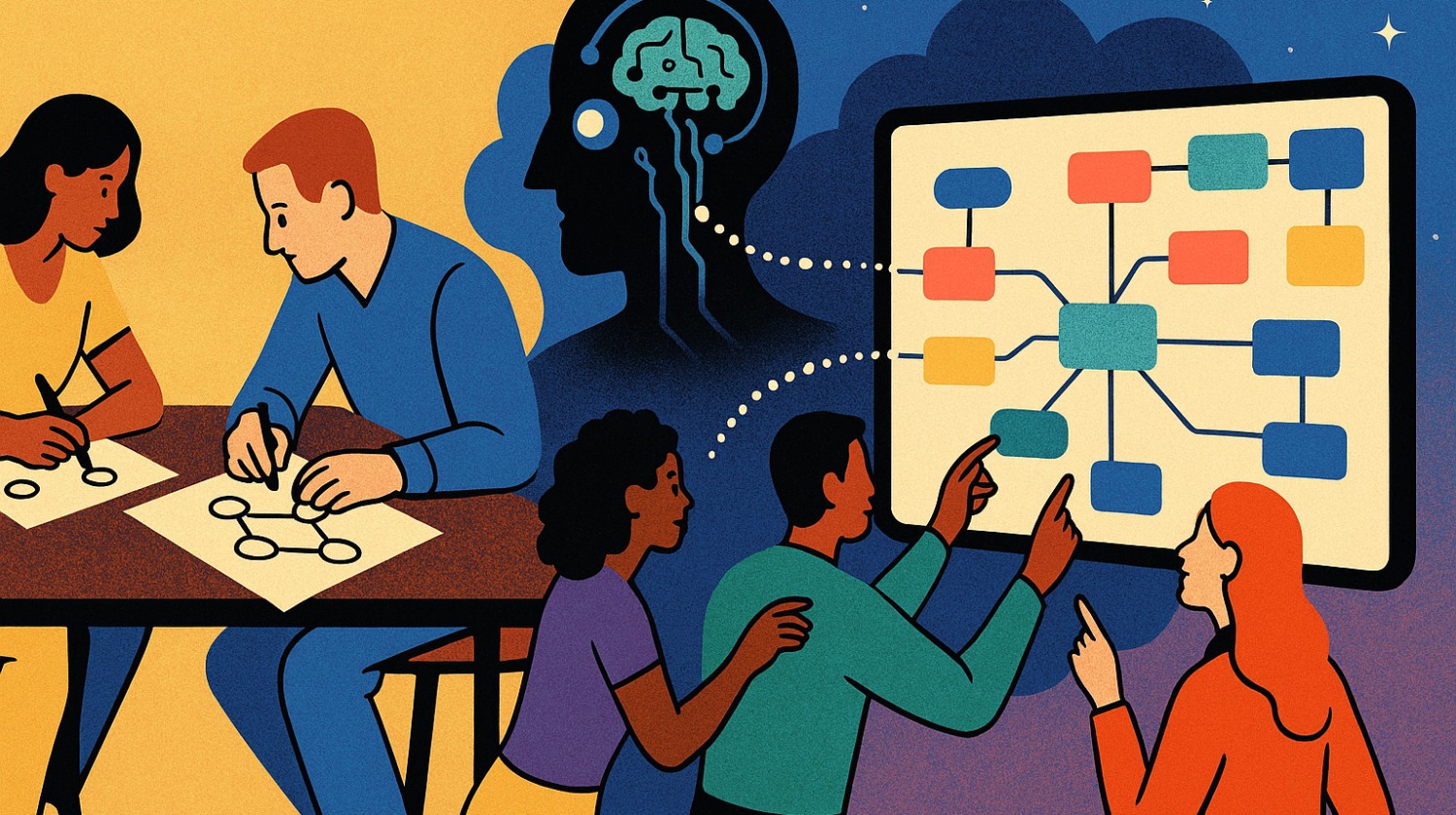TechTalk Daily

July 3, 2025 by Daniel W. Rasmus

Since the late 1990s, mind mapping has been a digital proxy for representing Tony Buzan’s freewheeling paper-based maps, giving them enhanced features, first for editing and then for all manner of activities from financial control or project planning.
At Serious Insights, we’ve consistently argued that mind maps aren’t just visual note-taking—they are architecture for meaning, vehicles for synthesis, and structures for making complexity visible. In earlier analyses like Market Analysis: Why Mind Mapping is a 21st Century Necessity, we noted that visual frameworks are critical in environments where ambiguity and speed overwhelm traditional linear tools.
But now we’re entering an era where the canvas itself has agency.
We’re entering an era where the canvas itself has agency.
The rise of generative AI shifts the role of the map from a recording surface to a cognitive workspace, one that proposes, reacts, and evolves in tandem with the user…
This post explores that transformation, critiques the current generation of tools, and points to what’s next—click to continue at SeriousInsights.net!_2.png)
About the Author:
Daniel W. Rasmus, the author of Listening to the Future, is a strategist and industry analyst who has helped clients put their future in context. Rasmus uses scenarios to analyze trends in society, technology, economics, the environment, and politics in order to discover implications used to develop and refine products, services, and experiences. He leverages this work and methodology for content development, workshops, and for professional development.